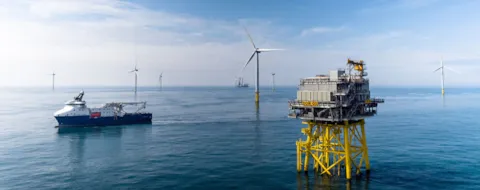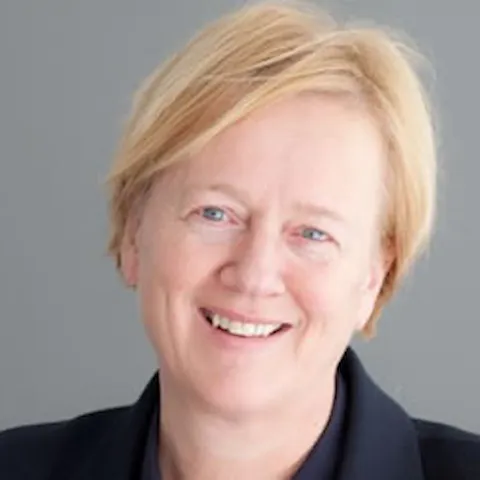Views from the industry: Equinor
Equinor, a broad energy company, developing oil, gas, wind and solar energy in more than 30 countries worldwide is partnering with SSE Renewables to deliver Dogger Bank – the world's largest offshore wind farm. Equinor’s Hywind Tampen project is meanwhile paving the way for floating offshore wind to become a commercially viable ‘next big thing’ in renewables.
We spoke to Trine Ulla Vice President Greater Wash, New Energy Solutions — North Sea at Equinor about ocean renewables, the rise of floating wind and the battle for space in the North Sea.
Trine Ulla: Few ocean energy projects show the potential for offshore wind to accelerate the energy transition better than Dogger Bank Wind Farm, 130 kilometres off northeast England. With a total installed capacity of 3.6 gigawatts (GW), it will be a game-changer for Equinor as we pursue ambitions to become a major offshore wind player.
The scale is also significant for the UK and globally. As a member of the Ocean Renewable Energy Action Coalition (OREAC), we are working with other stakeholders, including governments, to achieve OREAC’s vision of ocean renewables, including offshore wind, supplying 1,400 GW of energy globally by 2050, about 10% of total energy demand. Dogger Bank Wind Farm points the way to achieving that. Its three phases of 1.2 GW each will take coordinated efforts by us and many other stakeholders – suppliers, policymakers, and shore-based fabrication and services facilities – to build, install and operate.
With wind turbine technology still developing rapidly, we want to use the best, and to get the best from it. A huge digitalization programme tracking the project let us apply new technology and further improve the efficiency and cost-effectiveness of operations. Predictive data analytics will let us optimize inspection, repair and maintenance scheduling, and maximize performance of individual turbines and the project as a whole.
We believe that power generated by floating wind turbines moored rather than fixed to the seabed is the next big wave in renewables. We showed this in our Hywind Scotland wind farm, and are now developing Hywind Tampen, a small project of great potential importance globally as a decarbonization solution for offshore industries. Its 11 floating wind turbines [88 MW] will provide wind power to reduce the use of gas-turbine power in the Snorre and Gullfaks offshore oilfield operations in the Norwegian North Sea.
Norway has a lot of attractive opportunities for offshore wind turbine deployment at deepwater locations for oil and gas, but the depth limits the extent to which fixed-bottom offshore wind turbines can be deployed. Hywind Tampen is another joint effort involving partners in the wind farm, and oil and gas field owners. While modest in scale, it will assist floating wind on its commercialization journey for a range of end uses. We believe that floating wind could power 12 million homes in Europe by 2030, for example. Our goal involves industrializing solutions and reducing costs for future floating offshore wind projects to make them competitive with other forms of energy within the next 10 years. I have been in offshore wind for 10 years, and the cost development has been fantastic. The cost reductions and efficiency gains in Europe in recent years have been stimulated by market and regulatory mechanisms encouraging competition. Policy has been working fairly well in our key markets of the UK, US and Germany to support this. I would like to see competitive support systems for renewables also in new markets, because I believe the only way of working long-term is to be subsidy-free, though you need support systems to get things going, Norway has an opportunity here, especially in the commercialization of floating wind.
Hydrogen, and carbon capture and storage (CCS) also play into the future for Equinor’s broad energy agenda. Both are needed to decarbonize and link up energy systems. For example, Equinor is participating in the Northern Lights project to ship liquid carbon dioxide (CO2) from industrial capture sites near Oslo to an onshore terminal then pipe it for permanent subsea storage in the North Sea. The company is also involved with partners in exploring the potential in converting natural gas to hydrogen, with CCS capturing the resulting CO2. This ‘blue hydrogen’ represents an opportunity to develop low-carbon solutions for power, heating and transportation.
The COVID-19 crisis has challenged us to be as efficient as possible. We can apply some of the lessons we have learnt going forward, such as implementing condition-based maintenance. Developing offshore wind projects could obviously be challenging if the pandemic lasts a long time. The global supply chain could be affected. On the other hand, this could represent upsides for local industrial development, with many countries considering this an opportunity for a post-COVID green recovery. Competition for acreage is currently quite fierce because interest in offshore wind is increasing as the opportunity space in Europe opens up. For example, there will soon be another licensing round in the UK, the first for a decade. Equinor sees the potential offshore wind market globally as an excellent opportunity to support our strategy to become a broad energy company.

